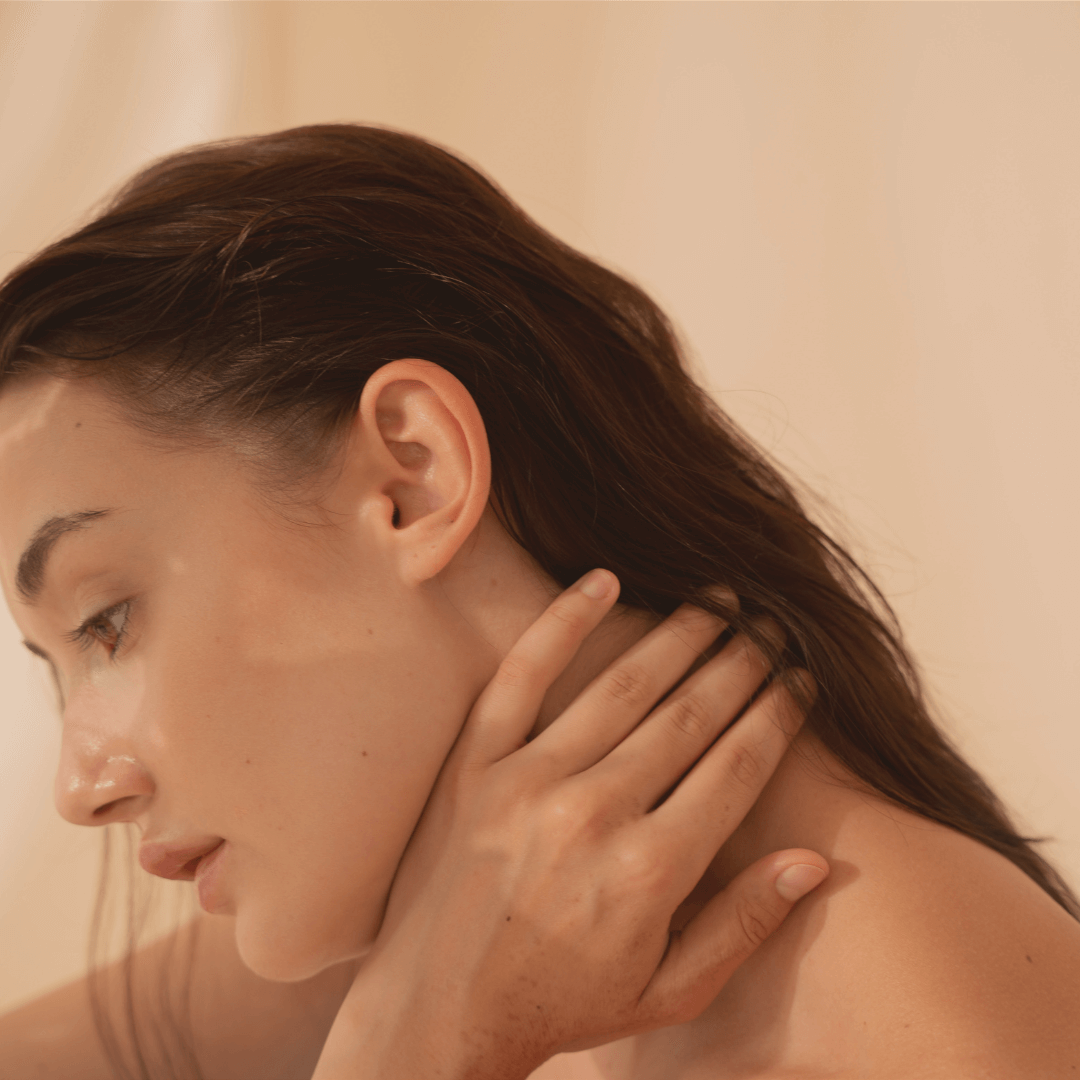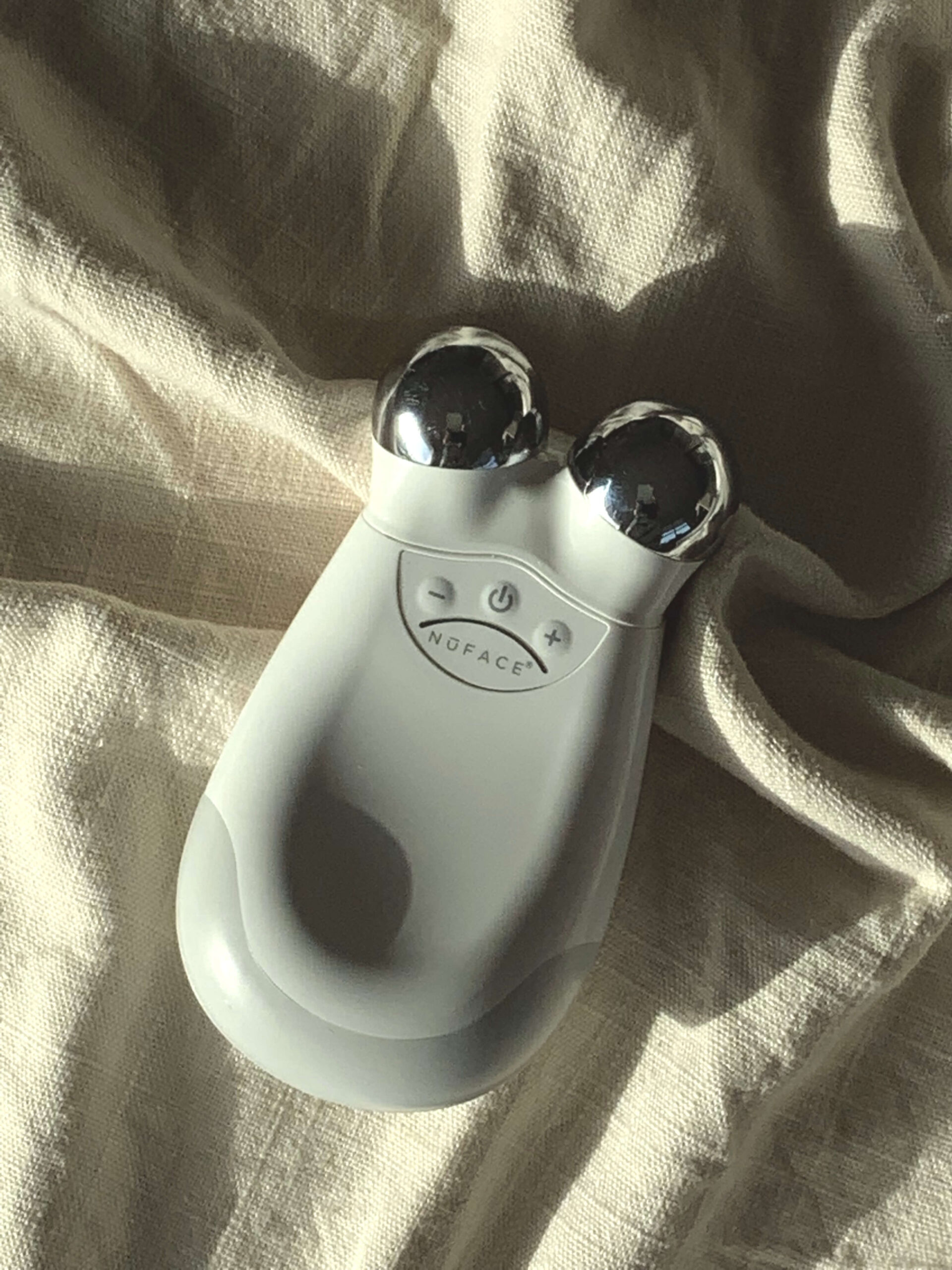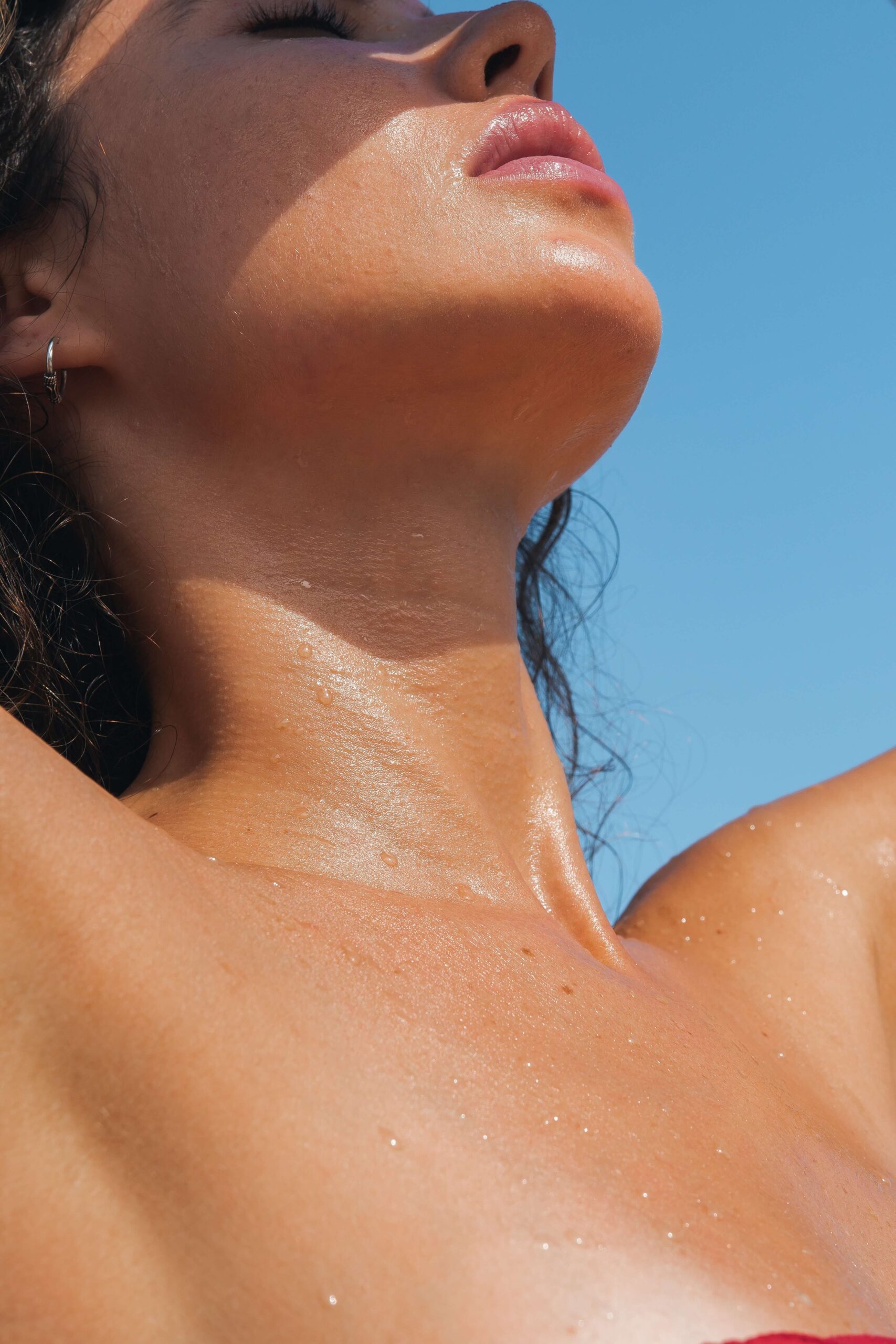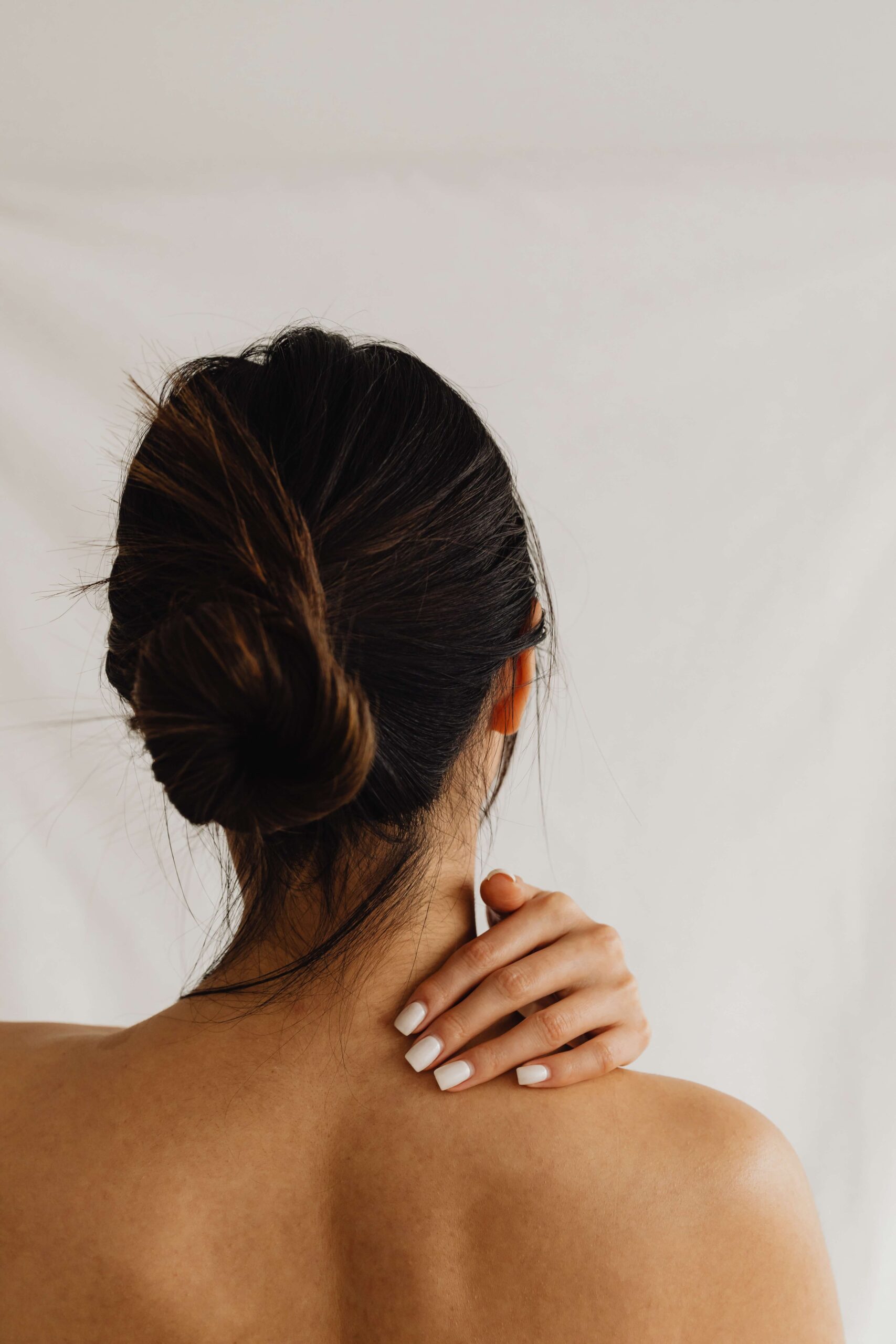
I’ve seen enough clients to know that Temporo-Mandibular Joint concerns and head tension is not uncommon. Many clients come to me obviously for their skin but it doesn’t take much digging to discover they are also experiencing TMJ symptoms, head or neck tension. They’ve come for a Buccal/Inner Mouth Massage Facial with a focus on their skin and often inquire if it would be helpful for the tension as well. And yes, it absolutely is!
The Temporal Mandibular Joint (TMJ) is the most used joint in the body. This joint of the face and surrounding muscles influence the way we chew, the health of our teeth, and the health of the surrounding skin and can be the cause of head pain, headaches, tension, and overall influences the shape and structure of the head and face.
Common concerns of the TMJ area and muscles often consist of teeth grinding, and jaw clenching, which both cause destruction of the teeth, headaches, limited range of motion, and earaches, and can trickle down into causing neck pain. While teeth grinding occurs mostly during sleep, jaw clenching and tension often happen unconsciously throughout the day.
Natural Ways To Heal TMJ
Clients will absolutely feel relief after their Inner Mouth Massage treatment but to bring long-term pain relief and to support a lifelong healthy TMJ area, a layered approach is needed. This begins with understanding why the tension has manifested, to begin with. Is it something postural, the way we sleep, stress, incorrect breathing patterns, and even allergies can cause an imbalance in the jaw area?
If we are unable to breathe through the nose and the jaw is constantly hinged forward, stressing the joint disc and positioning of muscles, this becomes a problem. This is also vital to monitor children as they are developing. Breathing patterns and jaw health can either cause or prevent a host of teeth and postural issues.
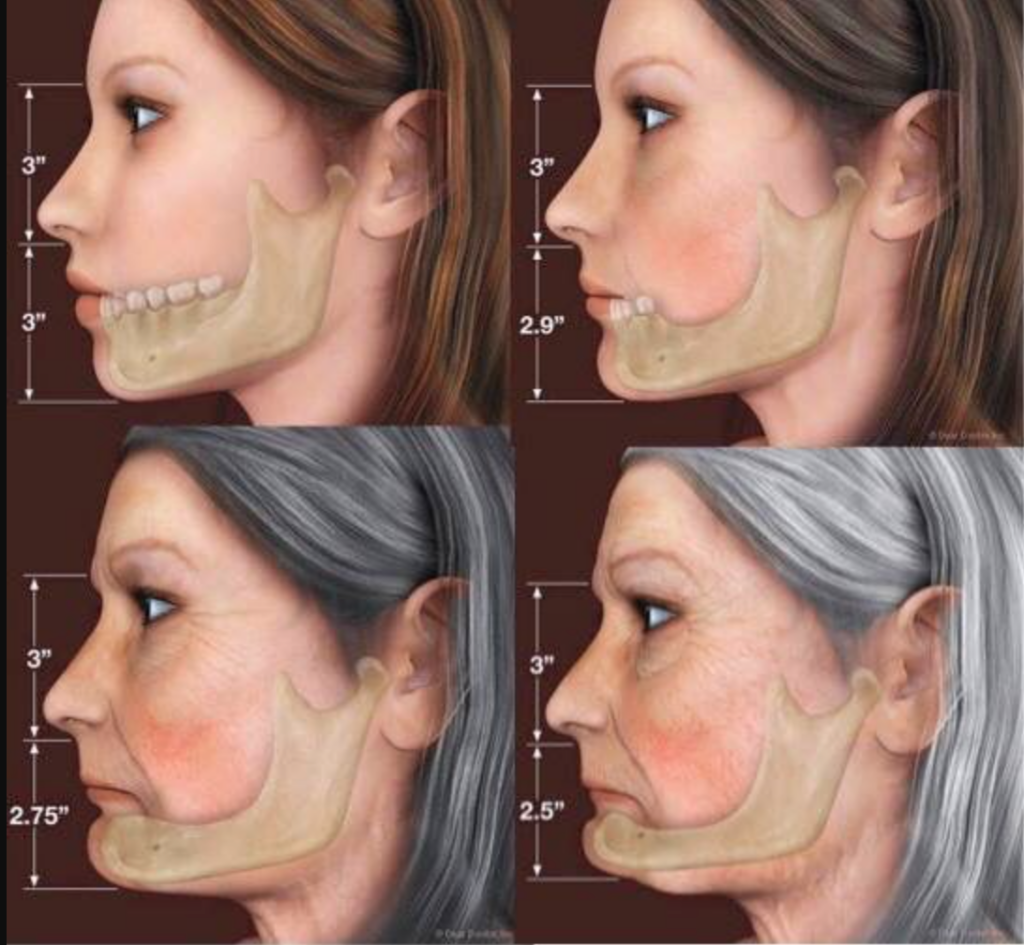
If grinding and clenching of the teeth is not addressed, in adults or children, the teeth can begin to wear down and the constant pressure stresses the mandible bone as well. When teeth become shorter from grinding or clenching, this shifts the structure of our facial bones and over time changes the shapes of the face. Our facial bone structure holds up our facial muscles, and our skin and once it is lost, it is very difficult, if at all, to rebuild the bone structure.
The jaw is overall under-addressed in both the world of esthetics and in child development.
In children, jaw imbalances can cause face and skull bone imbalance, teeth crowding, and nasal airway obstruction. Important to note that nasal airway obstructions also cause jaw imbalances to begin with. This is deeply intertwined with the food quality of today because if a child has allergies to food, not uncommon due to poor quality and processed foods, this can clog their sinuses and mouth breathing then becomes habitual.
Mouth breathing is a catapult into teeth crowding, postural issues, and imbalanced skull bone development, as well as a host of other health concerns. The focus in this article is the TMJ but more on breathing patterns for all aspects of optimal health coming soon.
Most pain and headaches from TMJ disorders tend to be tender, achy, and run up the side of the head. TMJ tension will also cause tightness throughout the scalp and neck when left unaddressed. Tension and pain radiate, refer, and travel through the body.
Treating the pain in your jaw and concerns begins with understanding this intricate area of the head. Below we will take a look at the jaw from a quick anatomy lens and then dive into some natural ways we can support the TMJ area and surrounding muscles, our muscles of mastication/chewing
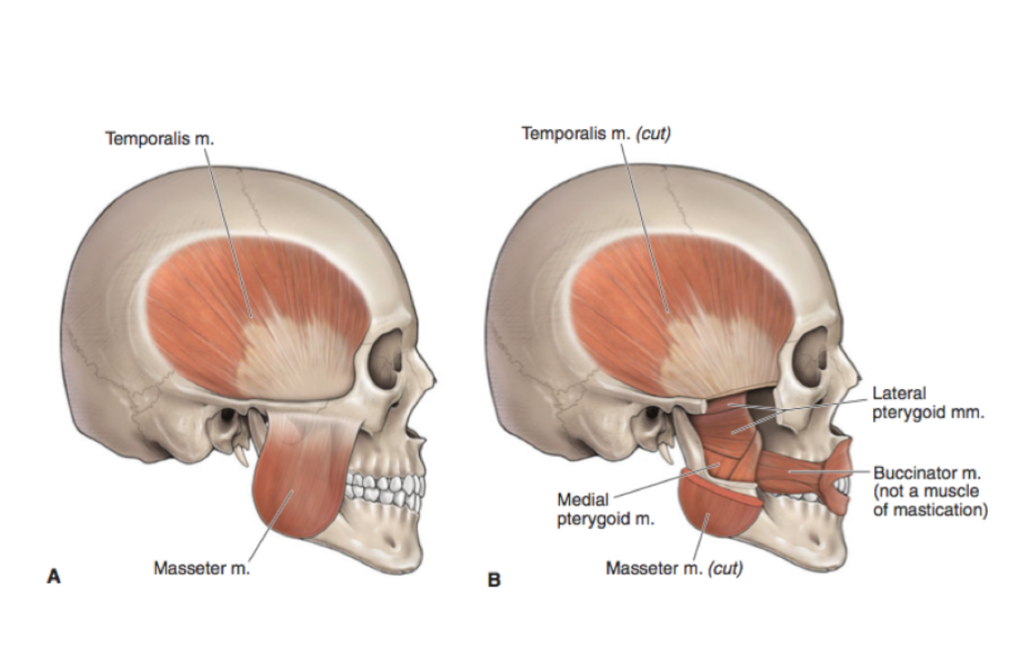
Mandible
The mandible or jaw bone is the largest bone in the head and the only skull bone that is constantly moving, as the TMJ articulation is a hinge joint. We chew and speak through the jaw movement of this bone, which reflects how much we use the mandible and our muscles of mastication/chewing are all attached to it. Without the mandible, we would not be able to chew or speak. Fundamental for our survival.
Muscles of Mastication/Chewing
There are 4 main muscles of mastication. These muscles work synergistically with each other in assisting us to chew, break down and digest our food. This is not only to break down our food into small pieces but chewing also helps our food mix with saliva, which contains digestive enzymes. Make no mistake, digestion begins in the mouth.
Masseter
The masseter muscle is the strongest muscle in the body and is responsible for lifting the jaw and closing the mouth. This is to support us in chewing and breaking down our food. Humans are natural carnivores and the strength of the masseter is related to our survival.
The masseter originates from the zygomatic arch and inserts on the ramus of the mandible. An overdevelopment of this muscle, often from jaw clenching and teeth grinding can cause the appearance of an overly square jaw.
Temporalis
The temporalis muscle originates from the temporal fossa and inserts into the coronoid process of the mandible. It covers the side of the head, runs over the temples, above and behind the ear, underneath the temporomandibular joint region and zygomatic bone, to then insert into the coronoid process of the mandible. The Temporalis muscle is responsible for lifting the jaw and closing the mouth. The temporalis can be felt by placing hands on the temples and clenching. This is the most common area where headaches will occur from TMJ concerns.
Lateral Pterygoids
Located deep within the face on the inner surface of the mandible, the lateral pterygoids (2 heads) originate from the sphenoid bone and pterygoid plate and insert into articular disc of the temporomandibular joint and condyloid process of the mandible bone. These muscles are palpated from inside the mouth. The lateral pterygoids are the only muscles of mastication that open the jaw.
Medial Pterygoids
Also located deep within the face on the inner surface of the mandible, the medial pterygoids originate from the lateral pterygoid plate and palatine bone and insert on the inside surface of the mandible jaw bone. The medial pterygoids elevate and move the jaw forward. These muscles are palpated from inside the mouth.
Both the lateral and medial pterygoids are found inside the mouth, back near the molars where the jaw opens and closes. They can feel like thick rubber bands.
10 Ways to Treat TMJ Pain Naturally
With an understanding of the temporomandibular joint and surrounding muscles, here are 10 practices you can utilize to help relieve pain from the area and begin to cultivate a conscious awareness of just how important this aspect of the head and face is for chewing, speaking, facial shape, posture and structure of the head.
1. Self Face Massage
Start to open your mouth while using your fingers to feel around the TMJ area, about an inch in front of the ears. You will feel the skin divot as the mouth opens and closes. Open, close, and move jaw side to side and forward and back with slow stretching movements to begin.
From there, the masseter can be easily found by placing fingers on the lower, most square part of the jaw and lightly clenching. Start at the bottom of the jaw on the masseter and work up the muscle to the joint area in front of the ears.
Massage the joint region and move up to the large temporalis muscle, back down to the bottom of the jaw. You can slowly open and close the mouth while doing so. Continue to palpate the muscles as listed above and work out the tension.
Do these techniques on a clean face with a slip of oil. They are especially relaxing before bed and you can also add in moist heat to help relax the area.
2. Inner Mouth Buccal Face Massage (Heck Yes!)
If you are comfortable with self-massage, you can also massage inside your own mouth. I also have a few Inner Mouth Massage Tutorials you can find on my IG to practice at home. You can read my full breakdown of my Inner Mouth Buccal Face Massage for clients here.
3. Gua Sha For TMJ
Methods such as Gua Sha can help relieve muscle tension throughout the jaw area and are easy to use. Start from the inside area of where the cheek meets the nose and work outwards over the jaw, working out tension and concentrating on tender areas. Gua sha is supportive for TMJ conditions as well as lymphatic drainage and sinus congestion, which is helpful if you have jaw pain or imbalance occurring due to breathing restrictions. Check out a quick Gua Sha for TMJ tutorial here.
4. Stay Mindful of Your Jaw
Becoming more mindful of your jaw during the day is vital in addressing jaw pain, as it is not uncommon to clench the jaw throughout the day without realizing it. Do body scans often and check in with your jaw, neck, and head. I do body scans at my computer, while I’m working on clients, driving, before I fall asleep and basically anytime I think about it.
Remind yourself to implement the ideal face resting position, which is teeth loosely apart with the tongue resting on the roof of the mouth and lightly touching the 2 front teeth. With your tongue touching the 2 front teeth, this naturally prevents the jaw from clenching.
Avoid things like holding the phone between your head and neck, chewing gum, and leaning on your chin. All of the above inevitably clench the jaw, contract the neck and cause tightness throughout the neck and jaw area. If you’re currently experiencing tightness in the jaw, consider temporarily consuming more soft foods, as opposed to hard, chewy foods.
5. Breath Through Your Nose
Breathing out of your mouth hinges the jaw open. This wears on the joint disc and as mentioned above, stunts facial bone development and facial structure in children. Even as adults, we can learn to shift from mouth breathing to nose breathing. Not only is this supportive for our jaw but there are an insane amount of health, brain and facial structural benefits of nose breathing.
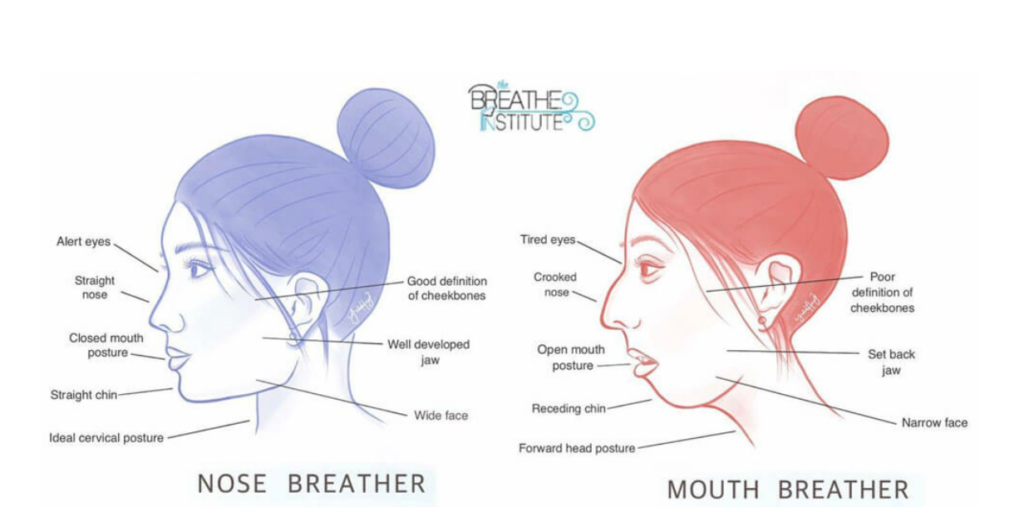
6. Manage Stress
Teeth grinding and jaw clenching are often a manifestation of stress and tension. Everyday life isn’t going anywhere, there will always be stressors we are unable to prevent but learning to manage stress is something we each have to choose to do. Be it meditation, exercise, yoga, or movement, the key is utilizing these tools to manage and prevent stress from manifesting as physical pain. Burn off stress in healthy ways so it doesn’t eventually manifest as dis-ease and discomfort through the physical body.
7. Magnesium
Magnesium works synergistically with calcium and is a vital nutrient in reducing calcium-induced contraction and tension throughout the body. A function of calcium works to contract cells and magnesium then works to push excess calcium out of the cells so muscles can then relax.
However, when there is a lack of magnesium, calcium remains in the cells, and muscles remain tight and tense. The relaxing and decompressing attributes of magnesium assist in stress management and reduce tension headaches, jaw tension, anxiety, constipation, Charlie horses, and restless legs syndrome.
8. Oil pulling
Oil pulling is super healthy for the mouth, and gums and detoxifies the whole body according to Ayurvedic Principles. While there isn’t much scientific evidence to back up claims of oil pulling for TMJ conditions, it can assist in alleviating tightness of the jaw. On a simple level, oil pulling consists of mouth-washing movements for 20 min with coconut oil/oil of choice. The action in general helps to open and increase circulation, inevitably releasing tightness throughout the jaw area.
9. Acupressure For TMJ
Acupuncture is a phenomenal and natural way to heal TMJ pain. In addition, Acupuncture works to alleviate painful attributes of TMJ disorders by relaxing the area as a whole and also supports our energy in managing and decompressing the stress that may be the root of the TMJ tension, to begin with. Acupressure, moxibustion, cupping, and gua sha are all modalities that acupuncturists can also perform or combine together as TMJ treatment options if needles are not your thing.
10. Mouth Guard for Sleeping
I am truly blessed to have an amazing and extremely detailed oriented dentist and as geeky as this sounds, I freaking love my orthotic night guard. This is a custom-made night guard to fit my top teeth while I sleep at night and has made a tremendous impact on my own TMJ pain. I used to wake up with dull headaches and I could also feel my top right molar changing shape from grinding. Night guards not only protect our teeth but they do overall help to relax the grinding and clenching. The few millimeter tooth separation provided by night guard means that the jaw muscles can not be fully engaged so there is less of an urge for the muscles, conscious or not, to clench or grind.
There you have it! My love for Face Massage, Inner Mouth Buccal Face Massage and how to support the jaw and structure of the face all tied together for you. Sounds complicated coming from an Esthetician right? However, I encourage you to look past the vanity metrics of conventional beauty standards and I hope to provoke thought around the structure, posture, and architecture of our heads and faces as a whole. Where the skin sits, the angles of our jawlines, wrinkles, fine lines, facelifts, and the things that billions of dollars are spent on to change are deeply intertwined with the way the face moves, the way the jaw moves, breathing patterns, sleeping, and overall how we move through life. Trust me, finding relief is within your reach!
If you are an Esthetician and would like to come and train with me, join me here. If you are an advocate for a mind, body, and holistic approach to skin and aging, then The Beauty Collective is for you.
